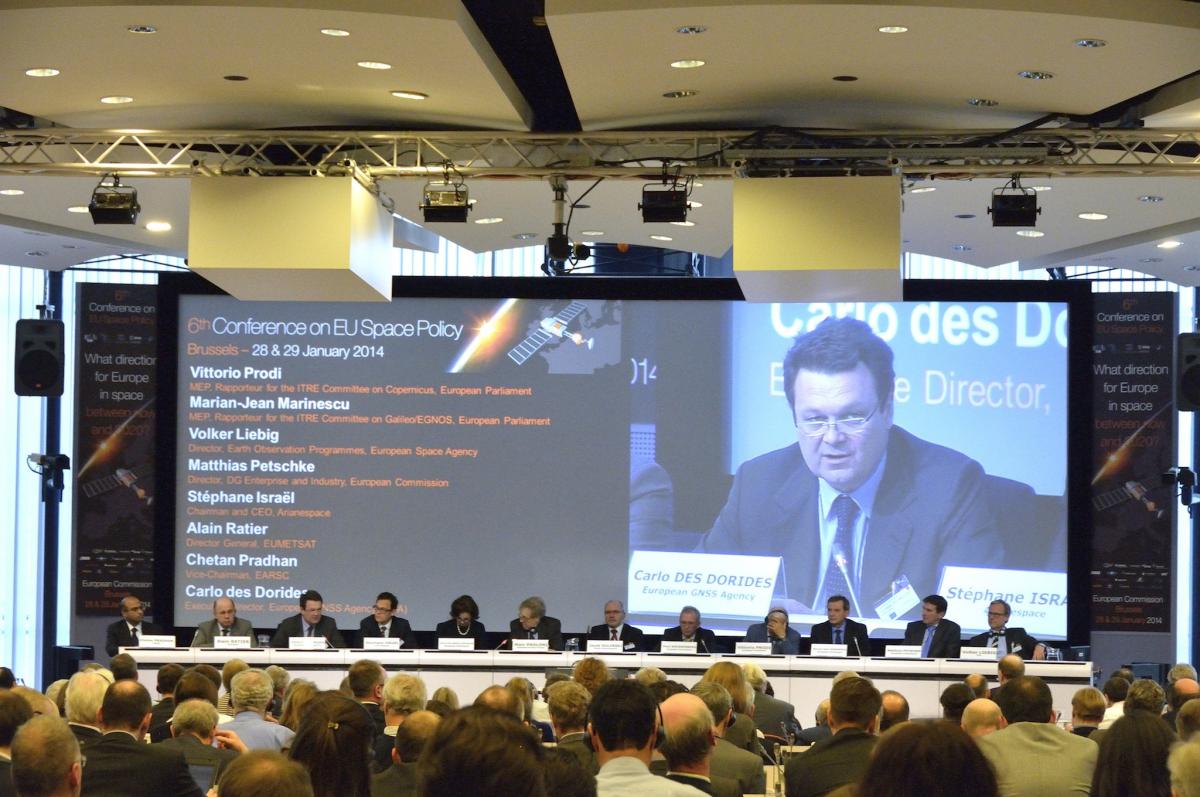The European GNSS Agency (GSA) and members of the European space community discuss the Prospective State-of-Play of EU space programmes at the Sixth Conference on EU Space Policy.
With the inclusion of space in the Horizon 2020 Framework Programme for Research and Innovation, the European Union has made clear that space remains an important policy area. However, this support cannot be taken for granted. If space is to remain a priority, its case needs to be consistently made and regularly updated to reflect the evolving needs of society.
“Space is a key enabling technology,” said Carlo des Dorides, Executive Director, GSA. “Our job is to bring European research onto market that both enhances Europe’s competitiveness globally and increases the overall well-being of our citizens locally.”
In this sense, the challenge is to ensure that space remains a driver of growth, innovation and employment that provides real, tangible benefits to European citizens.
EGNOS and Galileo are two prime examples of how Europe is meeting this challenge.
EGNOS a success
 EGNOS, which has been operational since 2009, is proving very successful. For example, in the road sector, 60 per cent of all devices are EGNOS enabled. In agriculture, EGNOS technology is being increasingly used, and in the aviation sector there are more than 200 EGNOS-based approach procedures published at over 100 airports.
EGNOS, which has been operational since 2009, is proving very successful. For example, in the road sector, 60 per cent of all devices are EGNOS enabled. In agriculture, EGNOS technology is being increasingly used, and in the aviation sector there are more than 200 EGNOS-based approach procedures published at over 100 airports.
Yet there is always room for improvement.
“Now that the GSA is fully in charge of EGNOS, our challenge is to maintain and improve upon the existing performance of EGNOS,” said des Dorides. “Although performance is already very good – at nearly 100 per cent – we can improve on this by providing more coverage in, for example, Eastern Europe.”
Another challenge is to expand EGNOS’ success in aviation to other application. “We will take steps to maximise user options,” commented des Dorides. “The main challenge is to overcome existing barriers in such sectors as rail and maritime in order to incorporate performance based navigation into their operations.”
The development of the next EGNOS release (version three) is also progressing, with an intended launch date in late 2017. The new release will bring improved performance of both signal and capacity, along with increased coverage. Version three will also provide a complementary overlay with the Galileo system.
“There were indeed some who wondered why we need to spend the money if there are other systems that you can use,” said Marian-Jean Marinescu, Rapporteur on the Regulation on the implementation and exploitation of European Satellite Navigation Systems, European Parliament, addressing the Galileo budgeting process. “But no one questioned the added value of Galileo for reviving the economy, creating jobs, ensuring the independence and competitiveness of the EU and for improving our daily lives.”
Galileo is currently shifting from deployment to operations, with Early Services becoming available in late 2014/early 2015. With the expected launch of six additional satellites to the Galileo constellation, users will soon be able to benefit from such Early Services as Open Service, Search and Rescue (SAR), and Public Regulated Services (PRS).
More Information
Media note: This feature can be republished without charge provided the European GNSS Agency (GSA) is acknowledged as the source at the top or the bottom of the story. You must request permission before you use any of the photographs on the site. If you republish, we would be grateful if you could link back to the GSA website.